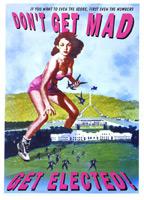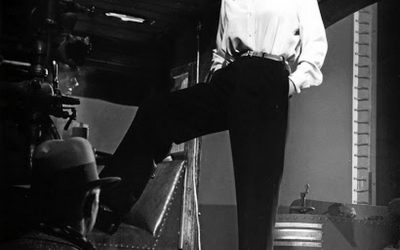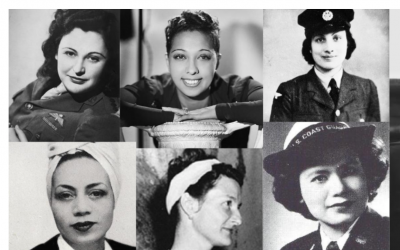Those of you who are familiar with my blog will know that I have some interest in women’s rights and representation in parliament, the media, literature and film.
Today I came across an interesting chart. 4thestate.net have been analysing US election coverage in national print, TV broadcast and radio outlets. This chart breaks down how often men, women and organisations were quoted in relation to the specific women’s issues of contraception, abortion and women’s rights, during the six month period of 11/1/11 to 5/1/12.

81% of statements about abortion across media covering the 2012 US election were made by men.
Obviously, men are by nature never going to be faced with the quandary of whether or not they can afford the social, financial, emotional and physical consequences of their own unplanned or medically dangerous pregnancy, whether it resulted from consensual sex or from rape.
So, how can women’s representation be so poor on issues that specifically relate to women’s bodies?
The US election coverage has shone a light on a problem that many of us were not entirely aware of before – the lack of women’s voices in public debate. It is also worth noting that many of the most influential films and publications are also lacking adequate representation of the 50.2% of the population that is still, remarkably, treated as a minority.
I am a big believer in statistics and research, as they help us look beyond the natural biases of our own experience. Let’s take a look at some stats.
I have gone over the hard facts on gender bias in literary publications before, to some pretty heated responses. Although statistically, women buy the majority of published novels, and although about equal numbers of women and men are published (yay!), women are still vastly underrepresented in awards and reviews. In Australia, for instance, 70% of the authors reviewed in the Weekend Australian in 2011 were male, and of the authors reviewed in the now defunct Australian Literary Review in 2011, 81% were male. Likewise, the Fin Review featured 79% male authors. These depressing stats are also reflected in major overseas publications like London Review of Books (504 males to only 117 female writers), The New York Review of Books (627 men to only 143 women) etc, all illustrated in neat pie charts by ‘The Count’ at VIDA.
Of course 2011 could have been a bad year for literature written by women. Sadly, a look at the 2010 stats shows the same pattern.
As novelist Dr. Kerryn Goldsworthy, a former editor of Australian Book Review and a former member of the Literature Board of the Australia Council, has said, ‘Most of the unconscious bias I have seen in the literary world, and I have seen a great deal, has been to do with the male-centered values of a dominant culture whose values most people wrongly think are universal and gender-neutral.’
What about film? This short video by Anita Sarkeesian neatly explains something called the ‘Bechdel test’, created (originally in jest) by cartoonist Alison Bechdel. To pass the Bechdel test, a movie simply needs to have at least two female characters who talk to each other at some point in the film about anything other than a man. Easy, right? Except that a remarkable number of films (some films I dearly love) fail this test.
Out of the 9 films nominated for Best Picture at the Oscars last year, only 2 films clearly passed the Bechdel Test.
As the video explains: ‘The Bechdel test is best when used as a tool to evaluate Hollywood as an institution. It can be applied to pretty much any grouping of mainstream movies such as the Golden Globes nominees or the top grossing films of any given year, all with similar results. The test helps us identify the lack of relevant and meaningful female roles as a larger pattern in the film industry as a whole. The problem isn’t restricted to any individual movie, director or genre.’
Again, this is an important point when it comes to ALL analysis of gender bias. Gender bias is often unconscious, and it is not the fault of any one film, TV show, newspaper, radio program, editor or individual. It is not even the fault of one gender. And as the video states, the Bechdel test does not indicate whether or not a film is any good or even whether or not the females portrayed are empowered, feminist or positive role models of any kind. But as a general tool, the Bechdel test does illuminate the fact that the majority of films are still made from the male perspective, with male characters telling stories about men’s lives.
It is perhaps unsurprising then that it took 82 years for a woman to win an Oscar for Best Director (The first and only female director to win was Kathryn Bigelow for The Hurt Locker in 2010). And not one of the 22 films in contention for the prestigious Palme d’Or prize at Cannes this year is directed by a woman.
(Note: Sarkeesian, in the Bechdel video I linked to above, has received an alarming amount of aggressive, sexist harassment for discussing women’s representation in media and video games. ‘These are serious threats of violence, harassment and slander across many online platforms meant to intimidate and silence. And its not okay.’ Read about it here.)
When I was at the Met in London recently, I picked up this famous postcard by Guerrilla Girls, a group dedicated to increasing representation of female artists:
Less than 3% of the artists in the Modern Art sections are women, but 83% of the nudes are female.
This is an incredible stat, but anyone who has spent time in an art museum would immediately recognise that statistic as true, give or take some percentage points. We are so accustomed to seeing female nudes by famous male artists that we have become blind to the imbalance, as with so many other issues related to gender. (Or indeed race, which is another worthwhile discussion.)
These stats clearly indicate that gender bias in media, film, literature and the art world is a worthwhile discussion. But what about women’s representation in parliament? What about the people who actually make the public policies we are required to live by?
As the government web page Australian Women in Politics points out, ‘While New Zealand had granted women the right to vote in 1893, in 1902, Australia granted women the right to vote and also to seek election…The victory was indeed groundbreaking, but the next hurdle proved even more difficult as it took nearly 22 years for a woman to enter federal parliament. Ironically, this ‘time lag’ was the longest of any Western country.’
It’s interesting to see the government page on women in parliament use Carol Porter’s amusing 1997 poster, Don’t Get Mad, Get Elected. The image plays on two damaging stereotypes about women’s rights activists. Firstly, that they are ‘mad’. (Their male counterparts are what…determined? Focussed?) The other is the image of the dangerous woman, destroying civilisation, in this case Parliament House itself.

So, where do we stand in 2012? (Not straddling parliament in a one-piece, I feel sure.)
In Katharine Murphy’s SMH piece, ‘The Truth About Sex and Power in Australia’ she points out that, ‘Women comprise 50.2 per cent of Australia’s population, but new Parliamentary Library research finds women ”comprise less than one-third of all parliamentarians in Australia, and occupy less than one-quarter of all Cabinet positions.”
Despite having our first female PM, Australia’s rank internationally for representation of women in parliament has slipped from 21 to 38 over the past decade.
When I presented these stats online, it was immediately met with this response: ‘Shocking that people KEEP those stats! Reverse sexism is equally bad ! SHOULD be about correct person for position,NOT some ‘Divine’ gender balance.’
Don’t get me wrong, I totally hear those of you who say gender shouldn’t matter. You are right. I agree. Unfortunately though, statistics both historically and presently indicate that greater equality in women’s political representation equates to better policies for women and children. And that does matter.
To give an example, Nordic countries – which have excellent maternity policies, to name just one issue – have the highest representation of women in parliament. Arab states have the lowest.
Let’s also consider this: Women working full time in Australia earn on average 17% less than their male counterparts.
That is about one million dollars over a lifetime. A one million dollar gender tax does seem steep, doesn’t it? Women also retire with less than half the superannuation of men. In fact, according to the Australian Human Rights Commission:
The average superannuation payout for women is a third of the payout for men – $37,000 compared with $110,000. Many Australian women are living their final years in poverty.
As long as one gender continues to be paid less, represented less, and continues to be consistently less involved in parliamentary decision making and public debate (even when it is about their own bodies), we have to conclude that unfortunately, gender still does matter.
Gender mattered when people were not allowed to vote, to own their own property or earn their own money simply because they were born female, and although those battles have been won by the feminists of the past who cared enough to fight for equal rights, sadly gender still matters. It is when we consider these various imbalances in representation, pay and financial security for one half of our population that we begin to see the true status of that half.
I’m grateful to the organisations who keep these statistics, because it is far too easy to dismiss the ongoing problem of inequality when we don’t have the numbers.
Tara Moss
Some links to organisations attempting to address gender imbalance:
Equal Pay Facts – A website that explains the issue of equal pay in Australia.
Emily’s List – Encouraging the participation of women in Australian politics.
The Stella Prize – A new Australian prize for women’s writing.
VIDA’s ‘Count‘ – Statistics on gender bias in various literary publications.
Sisters in Crime, Australia – Promoting and nurturing the talent of women crime writers.
Sisters In Crime – The international branch, founded in 1986 to promote the professional development and advancement of women writing crime fiction.
Business Chicks – Australian business network for women.
Parlour – Women, architecture, equity.
No Chicks No Excuses – ‘There’s no excuse for not having women speakers. Inspirational females to enliven your next conference, panel, board, think tank, article, broadcast, programme or lecture’.
Women at Telstra – Programs, initiatives and awards.
UNICEF Australia – Working closely with women, children, communities and governments in over 150 countries to protect human rights.
YWCA Australia – A women-led organisation that provides advocacy, programs and services for women, families and communities.
Know some more? Please tell us about it, below.





Tara,
Thanks for this great piece.
You might be interested in a website we have recently established – Parlour: women, equity, architecture. http://www.archiparlour.org
This seeks to address similar issues as in architecture where, probably unsurprisingly, the stats are equally alarming. Many of the resources we have collected are from other disciplines, and may be of interest to others too.
The good news is that Parlour has had a fantastic reception in the three weeks since we launched, so we hope that together we will be able to make some incremental difference.
Thanks
Justine
I decided to sit down and do some economic analysis of gender and literature (those years at the ABS must be worth something!) but the data availability was not strong enough to allow me to do what I wanted. Sure, there is data out there but it is too piecemeal to address what I was hoping to be able to do. Someone needs to put some $ in somewhere to fund the required detailed analysis. Frustrating.
Whoops – I hit Add to soon. As always, eloquent and reasoned, Tara.
Thanks Ross. Justine, thank you for your link. I have added it. x
Tara,
Loved your post and the powerful, poignant way you delivered it. Thank you for shining a light on these contentious and important issues.
I’m the CEO of Business Chicks. We’re Australia’s largest network for women in business. Our role is to get behind women who are striving for greatness in the careers and businesses. It’s our hope that with this support we’ll impact the gender imbalance in the business community and help lift the lid on the unconscious bias that still exists.
Thanks again and warmest wishes,
Emma Isaacs
Your blog is everything that I have been telling friends and family forever!!!!
Thanks Tara.
I was a feminist of the 1970s when the movement was fiery with passion fighting for women’s rights, and did make quite a lot of progress.
Then there seemed to be a long period when younger women thought the fight was won, and then a reversal to becoming men’s sex toys.
Now, I hear in your sort of writing, a rediscovery of what we were fighting about in the 1970s. And a determination.
You want $$$$ figures. 25 years ago I faced a depressing financial struggle & couldn’t work out what was wrong. I’m highly qualified and had held top jobs right at the front (even of the male world). Now I was struggling to get work, and was earning much less than as a younger woman. Eventually I turned to statistical data & did some ABS Census searches. It turned out that I was in the top 5% of Australian female income for women of my age. By 40 years of age then only 15% of women were earning over $20,000 per annum. And by 50 years of age only 5% were earning over $20,000 per annum. The figures will have risen now, but will probably still be worth inspecting. Older women’s incomes are startling.
Thank you, Emma. I have added Business Chicks (and joined up.) Thanks for the link.
Thanks for your comment, Melanie. It really isn’t until we see all these stats together that we start to see the true status of women. I find the current stats appalling.
Dear AnneTheFan, Thank you for pointing out the financial struggle of older women. I will look into some more stats on the subject. And thank you also for your thoughts on the rediscovery of inequality. We still have a long way to go.
Best wishes, Tara
Well done Tara. I consider myself a fairly enlightened feminist and yet some of these statistics shocked me. I know what link to send out to friends (both male and female) who say there is no gender imbalance any more… 🙂
Just recently I have read the article <a href="http://ellidavis.com/toront…">World’s Most Influential Women</a> and his author states very sad statistics there. According to the Pew Research Center, 69 per cent of Americans share the opinion that men and women make equally good leaders. Although the author says that it is a great progress since 1950´s, I think that in the 21st century is anything under 95% big shame.
Dear Tara, I may not be a female, but my mum raised me to be a good girl. I learned sewing, cooking and housekeeping, and "not to play the big man around the house". But that is irrelevant.
My point is that the problem starts in the home/school environment. Even though the vast majority of pre and primary school teachers are women they are somehow not empowering the girl students to see themselves as being groomed for careers in business and politics. By the time they hit high school, and puberty,it is all about boys and how to impress them. It is at this stage, too, that to see ambition in a fellow student seems to be frowned upon. I am thinking of the girl in my high school who held all the school records in the swimming events, and could have qualified for the Olympics but was ostracised into giving up swimming.
So, yes, statistics are all good and well, but what are the programs you can develop from them, and who will they be aimed at? And how are they to be implemented?
I totally agree that gender, and any other kind of inequality, is a great social and economic problem, and encourage you and your sisters in your struggles.
Beautiful blog entry, Tara.
Great work Tara, thank you for rounding up all these links and stats – great to see this getting traction on Twitter. We’ve got to keep talking about this.
Insightful, thanks Tara. Sadly reminds me of an Irish TV debate I saw there in the mid1990s on divorce and on the panel there was a nun, a priest, a (male) doctor and the enemy, a feminist!
It is important that one does not make assumptions of a cause-effect relationship – sometimes a cigar is simply a cigar.
Women are often not interested in politics or activism. Further, they may be occupied raising children, working etc., or they may feel their male partners represent their interests well. I don’t believe one has to be male in order to positively represent the interestes of women and children…although I agree that women promote the converse of this.
I also find that women are often less competitive than men and less concerned with public recognition – therefore they haven’t developed good networking or marketing skills vis a vis self-promotion.
Regarding the salary differential in Australia, the straight facts are misleading. Women are simply less interested in professions like engineering and mining, large-scale construction and, therefore, less likely to be employed in this area. At the moment, that is where all the money is in Australian employment. Ergo, the mean salary for women is lower than that for males.
One has to be careful not to assume that these disparities are atributable to discrimination – or even that they are important.
A difference is only a difference if it makes a difference.
Dear Tara
Thank you for a poignant post.
Women have achieved significant milestones reflecting progress in Australia over the past century. Australian women were able to vote in federal elections by 1902.
Currently women are taking roles of political leadership and business: Julia Gillard, Quentin Bryce, Deborah May (Advancing Women), Amanda Gome (Women’s Agenda), Diana Williams (Fernwod Founder), Naomi Simson (Redballoon Founder), CEO of Westpac Gail Kelly and Australia’s richest person mining magnate Gina Rinehart to name a few.
Women joined the workforce during wartime in the 1940’s and it was around the 1960s that the proportion of women in the workforce rose to above 40 per cent. Over the last 40 years to June 2009, the labour force participation rate of women increased from 40 per cent to 58.7 per cent.
The increased workforce participation has been a major factor in leading to better financial security for women. Being able to make money gives women the opportunity to ensure their own financial security, contribute to the household budget and secure their future into retirement.
Nowadays women have incredible opportunities to have good careers. The fact that women continue to be paid less is attributed to a number of factors:
• Women do not know their worth. They are happy to accept a salary that is offered to them, whereas a man would be confident in asking for that they think they’re worth. Even Gloria Feldt, feminist activist and leadership speaker, author of No Excuses: 9 Ways Women Can Change How We Think About Power shared with me that she once took a job that was offered to her after a man had turned it down, and she later found that he was offered $5k more. I too had a similar experience where was I was promoted from Auditor to Account Manager within a bank and was happy to receive a promotion that I didn’t negotiate my salary. 18 months later I found out a male colleague performing the same role was earning $20k more.
• Women do not negotiate their salaries well at the job interview level
• Women work hard and wait to be recognized, wait to be promoted, wait for the assignment. Women do not ask.
I am a woman and I fully support equal pay for women who perform the same role as men. The fact is not all women want to put their career above family and many are satisfied with their roles are carers.
What women can do to ensure their financial security is to plan ahead and invest their income and make retirement a priority. From my dealings with friends and business women through work, I can submit lots of women including business owners do not contribute enough to super and do not manage their finances well.
I would encourage that all women remain in the workforce even after having children in order to boost their net worth. Without participating in some form of employment whether it is for a company or self-employment women will not have money to save, invest let alone have sufficient super balances to carry them through to retirement.
Women In The Black is a personal finance community designed to empower and inspire women to take control of their financial destiny, improve financial literacy and learn to build net worth.
In conclusion I would like to submit women need to know their worth and need to ask for it; make wiser choices about money and their financial future, so that they can keep advancing mentally and financially.
Tamia Gallego,
Founder, Women In The Black
Thank you for the reporting and reminder of the value and importance of women’s rights, equality and justice. Your piece is particularly relevant in the wake of the 2012 US political party national conventions where pandering to the female vote was superficial and left a particularly pungent taste in the mouth. We still have so much more work to do.
Precisely how have you figure all of this out relating to this topic? I enjoyed scanning this, Ill must visit other pages on your own site straight away.
Where can I read about the last 10 – 15 years of feminism? I don’t know much about the history and changes that feminism has undergone, except that there seems to be some kickback that younger women don’t want the labels, just the benefits…. non academic texts please!
Annette